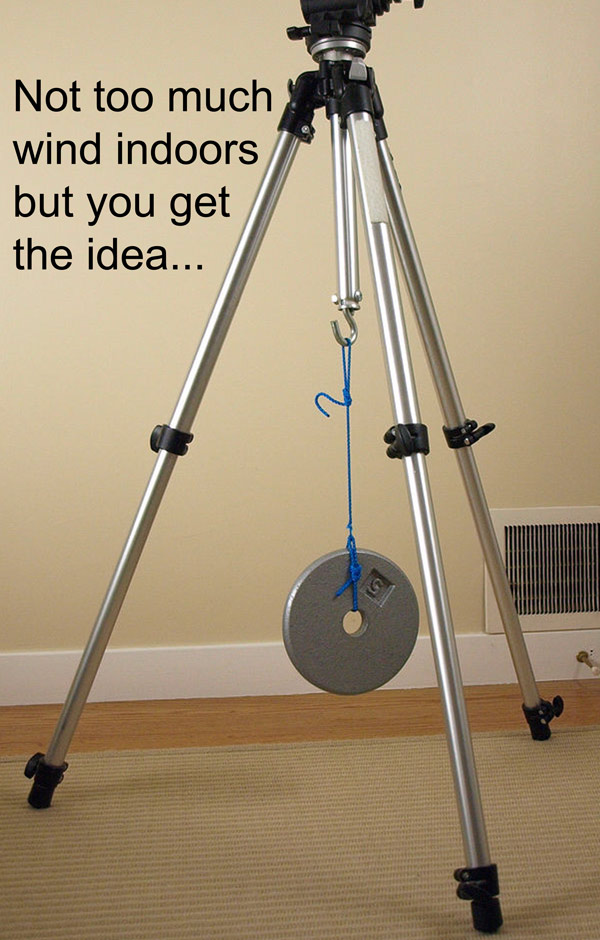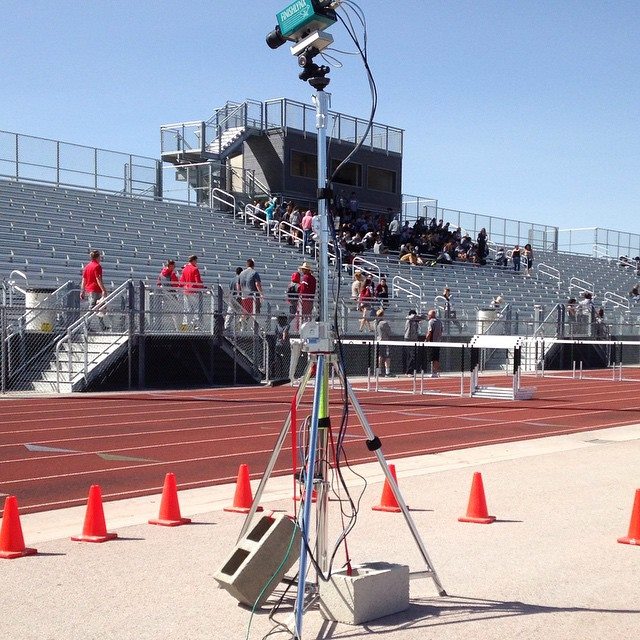Here in New England, weather is a constant surprise. With the common phrase, “See all four seasons in a day,” it’s safe to say we keep ice scrapers in our cars year-round — just in case.
If you’re lucky enough to be timing a race from the press box, most weather-related concerns aren’t as pertinent. But many aren’t so lucky. So how do you prepare for unpredictable weather at your races? What measures can be taken to ensure all of your sacred timing equipment is kept safe? There are at least two major elements that could be disastrous to your meet: water and wind.
Rain and Snow
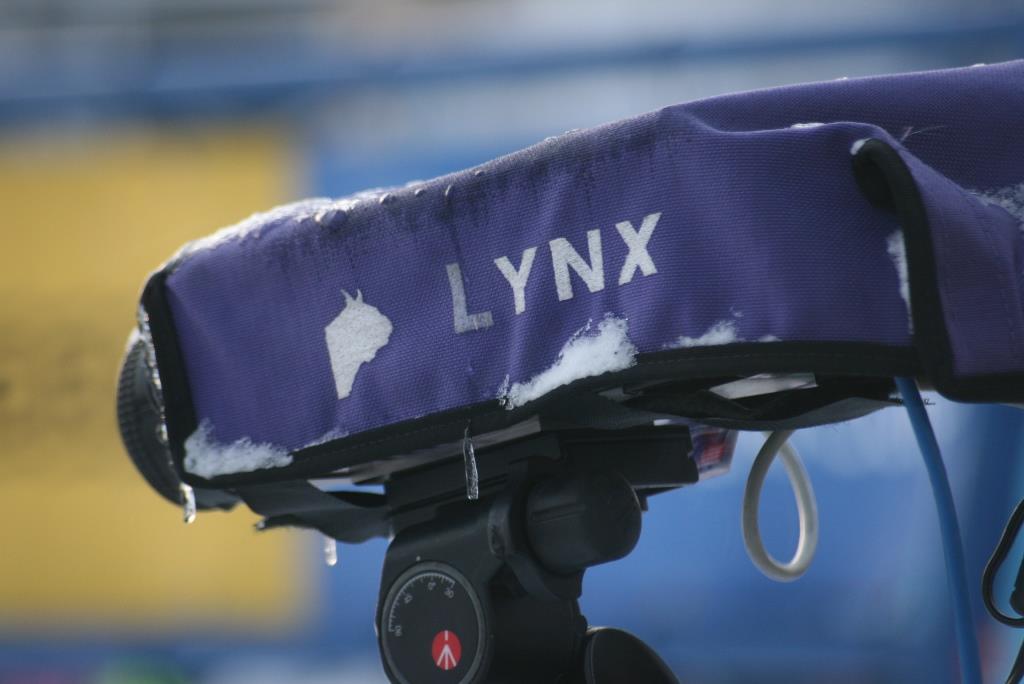
Timers everywhere have stepped up their creativity when it comes to keeping their equipment dry. We’ve seen large Tupperware bins customized to fit a camera, cardboard boxes folded to cover a laptop, entire timing booths set up inside of cars even.
- Lynx Rain Covers – The standard for rain protection, Lynx rain covers come with each photo-finish camera and have proven themselves time and time again. A clear benefit to this style is their snug fit, preventing the wind from carrying them away. Plus, their pliability allows for easy transportation and storage. Added bonus: they have been known to keep snow off the cameras as well!
- Plastic Bags – We’ve heard many different tools for waterproofing, but one item is a unanimous must-have — Garbage bags. No matter what creative setup is in place, plastic garbage bags are always useful in a pinch. Plus, keep your RadioLynx wireless start receivers protected from the rain by using a plastic zip-lock bag with a hole cut in one corner for the antenna.
- Plexi Covers – These tend to have their own set of pros and cons. On the one hand, their sturdiness offers a sure sense of reliability against the rain. Something to consider, though, is their bulkiness. If you have multiple cameras being moved from meet to meet, the hard covers can take up a good amount of storage space. As you can see below, the plexi covers are available for IdentiLynx video cameras too.
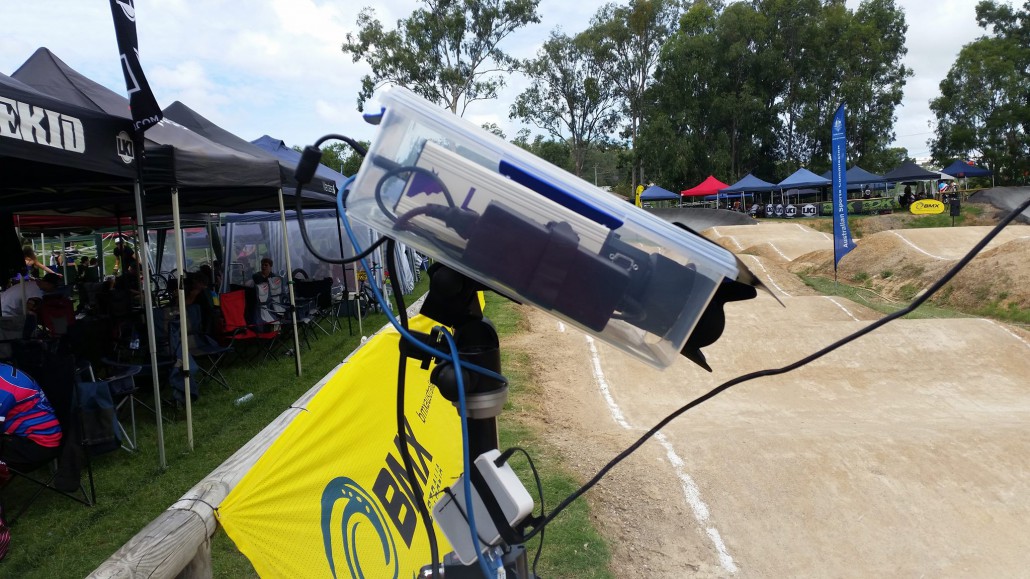
Wind
You have your camera covered, timing tent up, and finish line area roped off…but then the wind blows. A quick gust at just the right moment can dramatically affect your images if the camera isn’t secured. So how do you prevent gusts from ruining your event?
Every timer has their own preference for securing their precious cameras. Some prefer tripods over ladders, sand bags over ropes tied to stakes (or benches), and the list goes on. And the reason there are so many variations is that it’s not an exact science. So below are just some of the tips that could help with keeping everything in place.
- Tripods – If you’re choosing to mount your camera on a tripod, you can attach a weight to the center to hang down and keep it in place. Alternatively, we’ve seen some timers attach the tripod to a large bucket filled with cement or use cinder blocks at the base of their tripods.
- Step Ladders – Popular among many timers, step ladders offer great stability, plus the option to send people up the ladder to adjust the camera as needed. Though most would suggest using a remote positioner to make camera adjustments. Ladders can easily be weighed down by hanging shot bags or sand bags on the rungs, attaching ropes to stakes, or attaching 5 gallon buckets of water, which can be emptied and stacked for easy transportation.
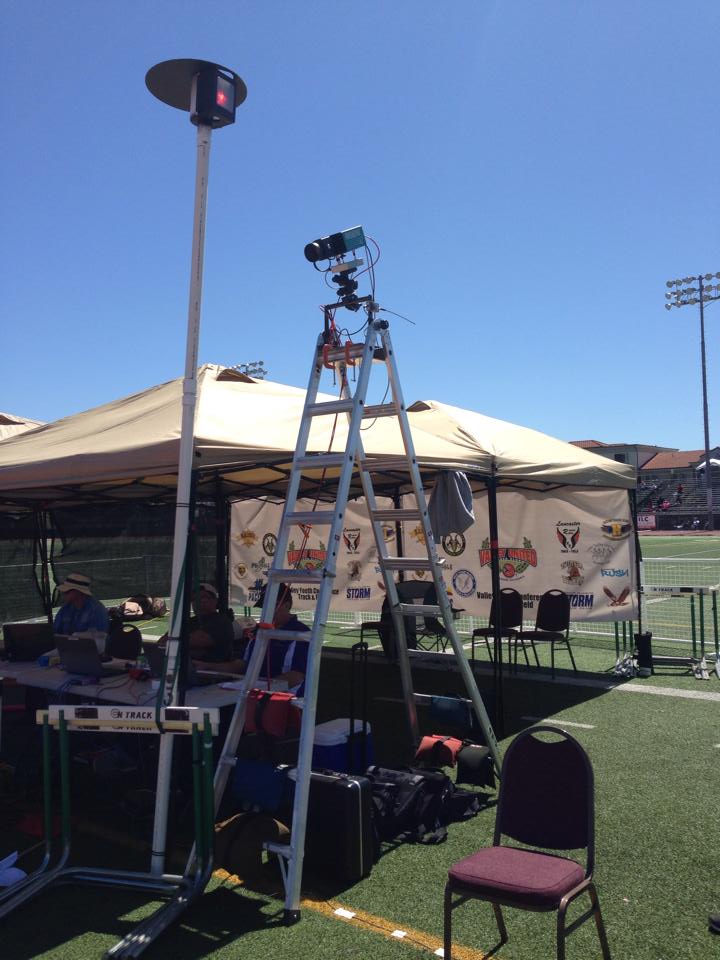
“My camera sits top a ‘Little Giant’ Ladder. My RadioLynx receiver is also mounted up there. As well as control box. I went to this due to high winds at my track, this platform is very stable and allows for sandbags to be hung from the rungs. It’s also nice when setting up to be able to climb up there.”

